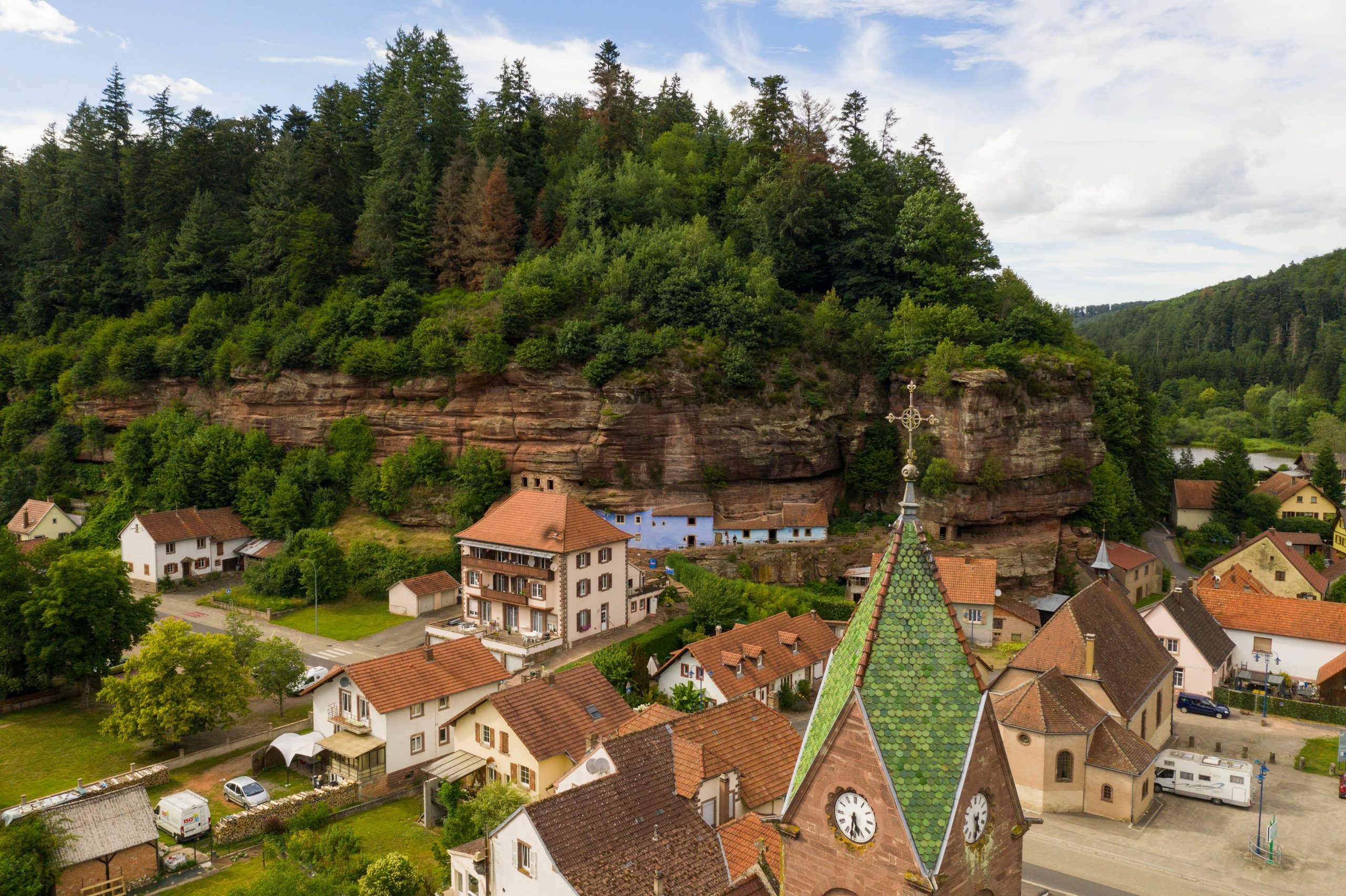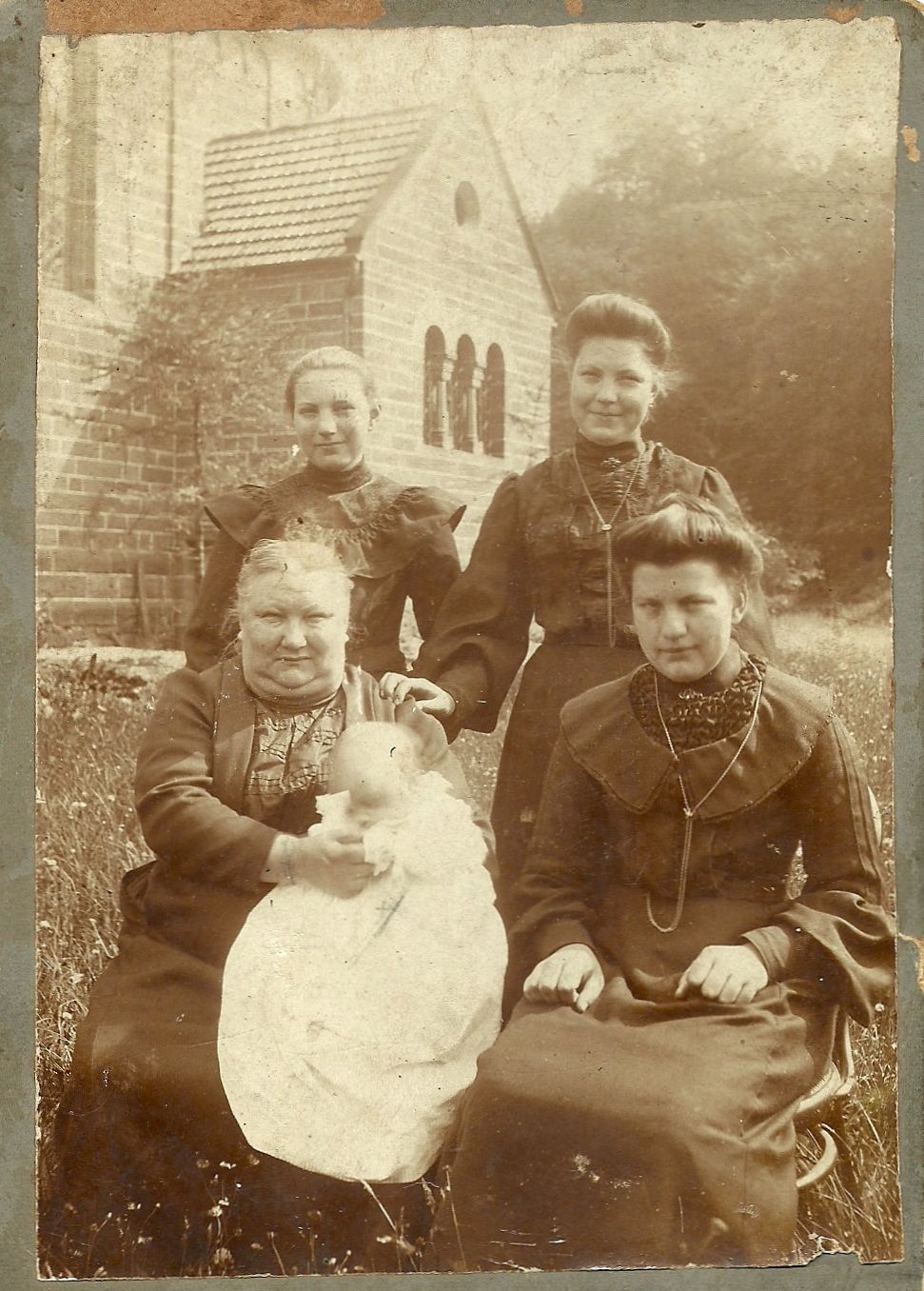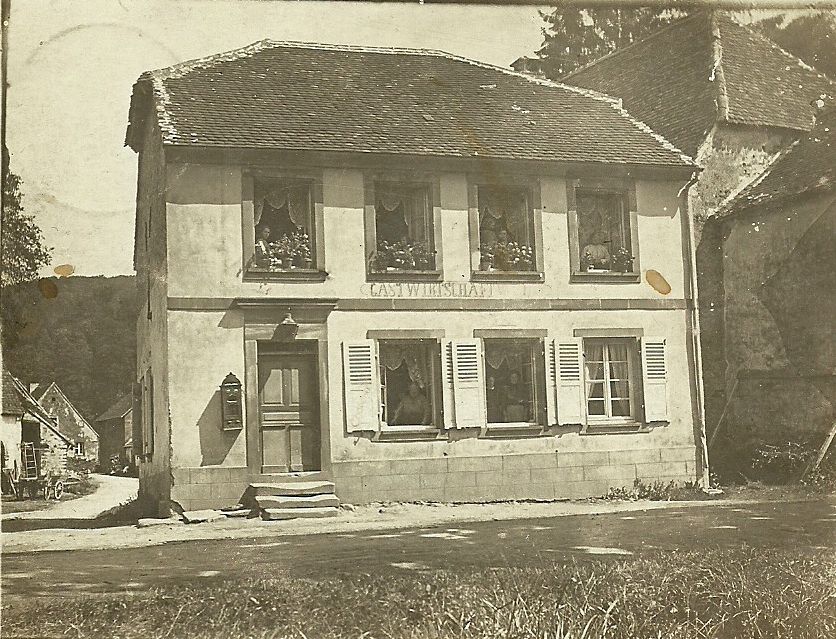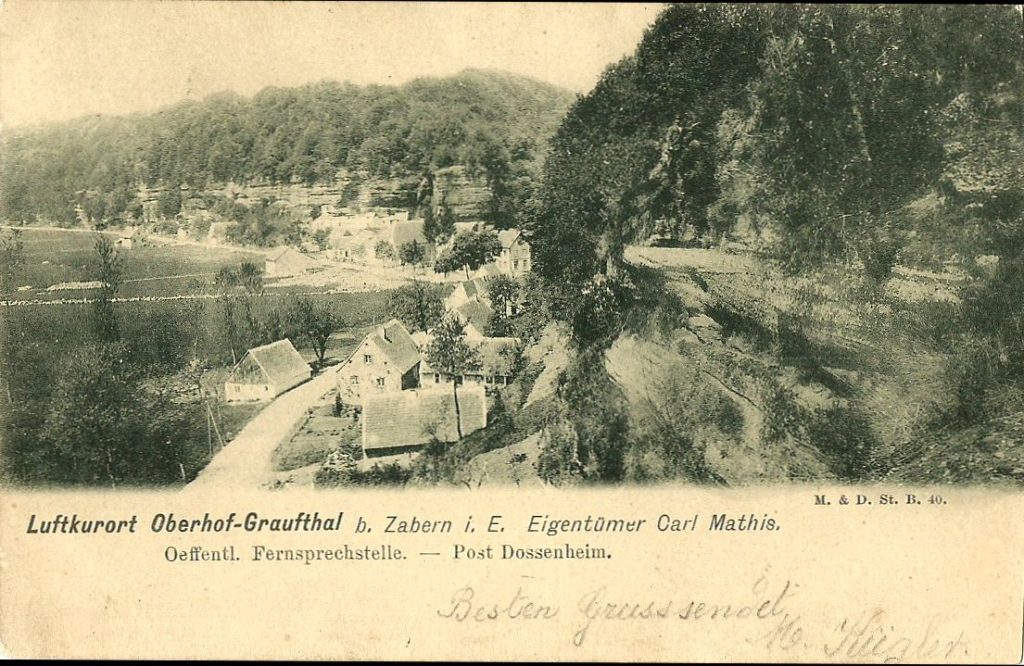
Graufthal
Located north of Saverne and a few kilometers from Moselle, Graufthal is a locality of Eschbourg. This place shelters an exceptional historical and archaeological heritage. The Maisons des Rochers and the remains of a Benedictine abbey are an essential part of the Alsatian landscape.
Graufthal, over the years
Graufthal through time
Graufthal, an annex of the municipality of Eschbourg, owes its renown to its troglodytic dwellings as well as the convent remains of a Benedictine abbey. Located at the heart of the Northern Vosges Regional Nature Park, surrounded by forests and overlooked by massive pink sandstone walls, this place quickly became part of history.
At the junction of the Rehbach valley and the Zinsel, the village has created natural crossroads, linking the Lorraine plateau to the Alsace plain. The ancient Celtic and then Gallo-Roman populations were then able to take advantage of a secondary road, in addition to the great Roman road which passed further south through the Saverne Pass. Later, in the early Middle Ages, the bishops and counts of Metz, who owned the Zinsel valley, built a religious establishment there.
From the middle of the 16th century, the village was administered by the lords of La Petite-Pierre. Most of them wanted to exploit the resources of the region, such as Count Georges-Jean de Veldenz, known as “Jerrihans”, the king of glassmakers. As everywhere in Alsace, the wars in the 17th century almost entirely decimated the population. When peace returned, some inhabitants built houses using the stones from the ruins of the convent. Some families, mostly poor, built houses in the hollows of the sandstone cliffs. In the meantime, the hamlet of Graufthal became an annex of the municipality of Eschbourg. The small chapel from 1619 was used for both Catholic and Protestant services until the Catholic church was built in 1904.
Graufthal
Graufthal et Oberhof, stations climatiques
Carte postale
Graufthal, lieu touristique
Carte postale
Moreover, from the beginning of the 19th century, the unique nature of the Maisons des Rochers and the few remains of the convent aroused the curiosity of visitors, designers and archaeologists. The development of the Club Vosgien and of hiking in the forest since 1870, as well as the construction of restaurants and hotels, reinforced the dedication to tourism of Graufthal.
Finally, in 1903, the village had modernized thanks to its railway station, which was in operation for 50 years, and its narrow-gauge train called “Eselsbahn“. The latter is very useful for locals and tourists, but also for the transportation of building stones from the sandstone quarries to Lutzelbourg.
First lodgings
In order to welcome tourists from the end of the 19th century, hostels, restaurants and hotels were built. Travelers could find places to drink, eat or stay in the area.
Gasthaus Helmstetter
The hostel “zu Rappen” (au Cheval Noir) was located at the entrance of the Rue du Vieux Moulin in Graufthal. According to postcards, the place already existed at the beginning of the 20th century. At that time it was the stopping point for numerous carriages loaded with logs.
On the other hand, the inhabitants of the area used to meet on a track placed on the other side of the street to play skittles. The kirb, the village festival, was held every year in the Helmstetter restaurant or in one of the other restaurants in the village.
The hostel also housed the post office before it was moved to the main street.
Façade du restaurant et
bureau de poste Helmstetter
Restaurant Helmstetter
Carte postale
Restaurant Helmstetter
Carte postale
Hôtel-Restaurant Janes
Façade de l’Hôtel Restaurant Janes
Façade de l’Hôtel Restaurant Janes
Otto Janes, maître rôtisseur
Otto Janes et Jacqueline, sa femme
Aware of his wife’s culinary talents, Alfred Janes, a native of Graufthal, decided in 1930 to found a hostel at the foot of the Maisons des Rochers. His business quickly took off. On Sundays, tourists and villagers gathered to enjoy the confectionery stands, the merry-go-round on the square and the best ice cream in the region.
Later, his son Otto took over and contributed to the success of the hostel by expanding the hotel and placing a rotisserie next to the restaurant. He also decided to develop the trails and install benches in the forest to enhance the site, as his father wanted.
Finally, having no one to take over from him, he sold his establishment to the municipality, which they turned into six apartments.

Madame Hari, ses filles,
sa petite fille
La famille Hari devant son restaurant

Façade du Restaurant Hari
Hari Restaurant
Located at the entrance of the rue de la Fontaine, this two-story house stood out from the small houses that surrounded it in the early 1900s. Drawings, postcards and photos trace the history of this place. The owner, Rosalie Hari, is often depicted, proudly posing in front of her door with her three daughters.
It was Louise Gerber, daughter of Mrs. Hari, who took over from her mother. In 1930, faced with the competition (the Janes restaurant), Mrs Gerber decided to build a new building opposite, which will become the Cheval Blanc hotel-restaurant. The post office, which was transferred to the restaurant building, remained there for a few years and was home to both Mrs. Gerber and the letter carriers’ families until it was moved to a neighboring house.
Oberhof Restaurant
The Oberhof restaurant is located 4 kilometers downstream from Graufthal, in a hamlet (the municipality of Eckartswiller) in the Zinsel valley, at the junction of the Nesselbach. Until the beginning of the 20th century, the restaurant represented for hikers a last haven before facing the “wild lands” populated by troglodytes. Some testimonies even described it as the last “civilized” place. Visitors appreciated the warm welcome, the quality of the meals and the comfort of the rooms.

Schutz der Stätte
As a unique element of the Alsatian cultural heritage, this unique site deserves to be preserved. This is why, in 1938, Graufthal was classified among the sites and natural monuments of artistic, historical, scientific, legendary or picturesque character. Then, in 1984, the remains of the convent were listed on the Supplementary Inventory of Historic Monuments, as well as the Maisons des Rochers in 1988.

